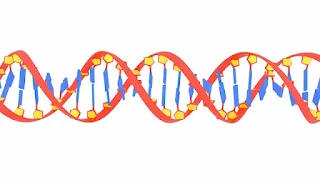Mendelian Disorder Occur in Human Beings
Like other organisms – animals and plants found in nature, there is inheritance of genetic traits in human beings and deviations also occur from it. There are many such traits in humans too, which do not follow Mendel's Law, which we briefly call Mendelian disorders found in humans. These traits can be of structural, functional, mental or abnormal nature.
How Blood Donation is Good For Health ?
Establishment of Human Genetics
- Study of Twins
- We have read about Yamaj or Twins in the previous title, click on the link to read – Click Here
- Study of Genealogical History
- In the study of the history of genealogy, some traits such as polydactyly, color blindness, etc. study the tendency of inheritance.
- Genealogy is studied through the genealogical analysis chart, in which the head is called Proband, the male member is Propositus, the female member is Proposita and their offspring are called Siblings.
- Different symbols are also used in the genealogical analysis chart, in which male is represented by square (□), female by circle (O), marriage by horizontal line (─) i.e. (□─ O). Meaning will be marriage.
- The character studied in the genealogy, in which member of the family it is, is represented by a full circle or square, the gene carrier or heterozygous member is represented by a half-filled square or circle. If there is doubt about the symptoms of a person, then a question mark (?) is put in front of it, while if a person has died, then a cross (×) is put on his sign.
Types of Genetic Traits Found in Humans
- Structural Traits
- Inheritance of physical traits is studied under structural traits. Like – body size, skin color, eye color, hair color, number of fingers, length etc. external physical characteristics.
- Functional Traits
- Under the functional specialty, the study of the symptoms found in the organs performing the functional work of the body is done. For example, symptoms related to body's immunity, physical ability, fertility, blood group, etc. internal functions.
- Mental Traits
- Activities related to mental activity such as self-respect, retarded intelligence, cleverness, singing, stupidity, literary skill, scientific skill, etc. are related to mental thought.
- Abnormal Traits
- Studies related to some unusual symptoms or diseases such as color blindness, hemophilia, baldness, leprosy, epilepsy, phenylketonuria, alkaptonuria, fusion of external body parts, etc.
Types of Mendelian Disorders in Humans
- Genetic Disorder Diseases
- Chromosomal Disorder
- Aneuploidy or Heteroploidy
- Autosomal Aneuploidy
- Aneuploidy Involving Sex Chromosome
- Euploidy or Polyploidy
- Aneuploidy or Heteroploidy
- Other Chromosomal Abnormalities
1. Genetic Disorder Diseases
These diseases or symptoms are produced by the transformation or mutation in a single gene in humans. Beadle and Tatum studied the metabolic activities occurring in the human body and presented the 'one gene, one enzyme' hypothesis, according to which metabolic activities in which one enzyme controls only one step. If any one enzyme is absent or altered, then there is a disturbance in the metabolism. Absence or alteration of enzymes depend on the genes, that is why this pathology is called genetic disorder.
For example – Phenylketonuria, Albinism, Sickle Cell Anaemia, Alkaptonuria etc.
Topographies Formed By Underground Water2. Chromosomal Disorder
These symptoms or diseases arise due to changes in the number or structure of human somatic chromosomes or sex chromosomes, that is why they are called Chromosomal Disorders.
For example – Down Syndrome, Edward Syndrome, Patau Syndrome, Turner Syndrome, Super Female, Super Male, Kleinfilter Syndrome.
3. Other Chromosomal Abnormalities
In this chromosomal irregularity, the arm of the chromosome gets deleted or the arm gets smaller or bigger, meaning that the chromosome is present in a certain number while its arm gets deformed.
For example – Cree – Du – Chat Syndrome, Myelogenous Leukemia.
Carbon Footprint : Impact and Prevention
Comments
Post a Comment